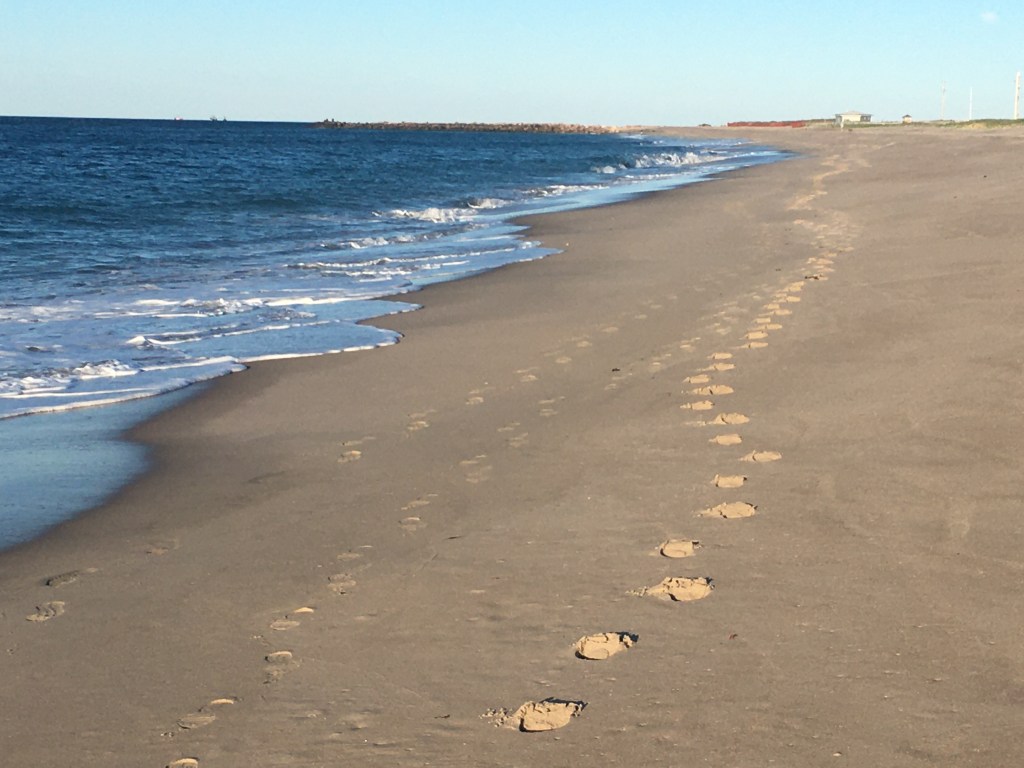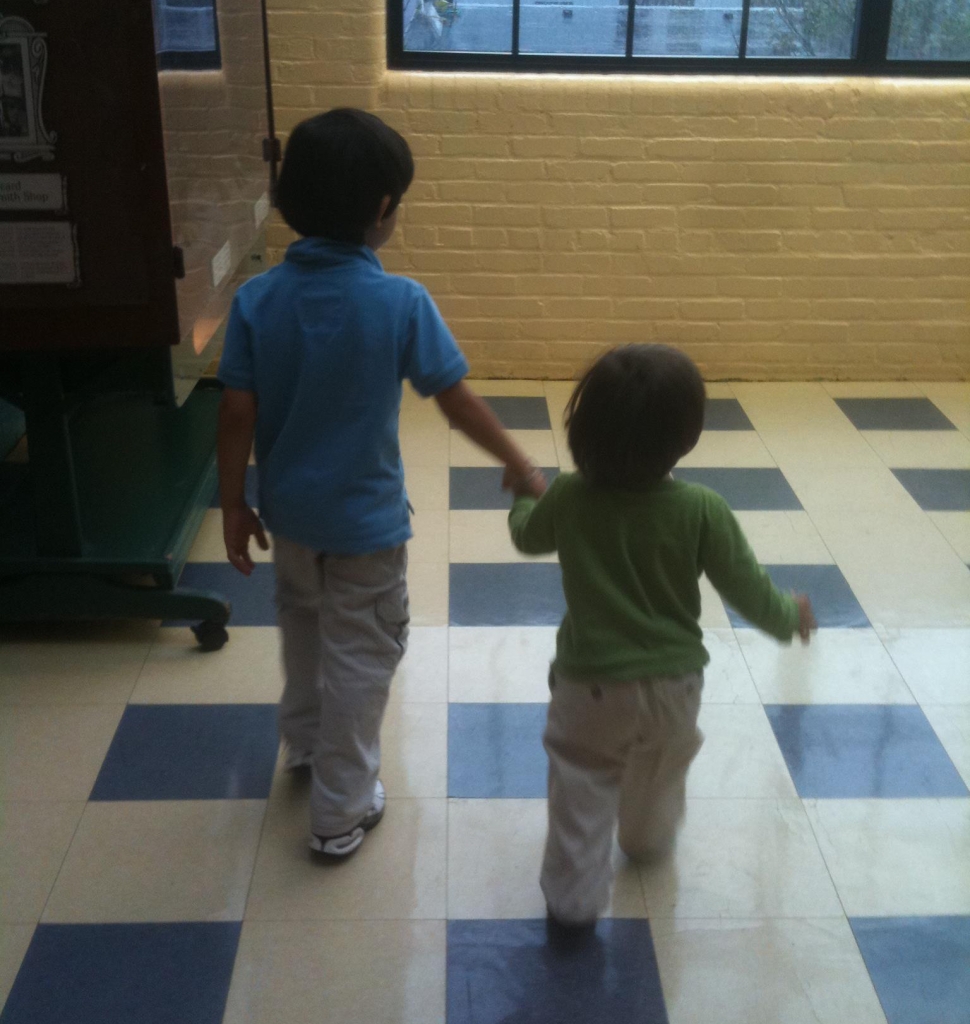
I get my best ideas and insights on walks. This is clearly a positive thing—it promotes exercise and insights at the same time! So why would I resist it, thwart it?
Because in my efforts at self-healing, a big part of which has been mindfulness practices, I got the idea that the “right” way to take walks is to turn them into mindfulness meditation sessions.
I’m not knocking meditation or suggesting it’s overrated. I’m much calmer, less reactive, and more present to all that is important, and better able to let go of what’s not, during times when I’m disciplined about starting the day with sitting meditation, even if it’s only for 5 minutes. Personal experience aside, there are mountains of scientific evidence demonstrating the many benefits of meditation.
I’m not saying there’s anything wrong with walking meditation, either. This can be a great practice, if and when it works for a person. What I am saying is, buying into the idea that that’s what I, personally, should be doing when I take walks—and more generally, that we should ALWAYS strive to be rooted in the exact present at all times—has not served me.
Besides buying into external ideas about the “right’ way to live, the mom multitasking habit has been part of the appeal of approaching walks as a mindfulness meditation. With two jobs and a family, it’s hard enough to find time for either exercise OR meditation, never mind both. Putting pressure on ourselves to make sure we’re doing all the things can take activities that are supposed to be nurturing and health promoting and turn them into just another item on the to-do list (and often one that doesn’t get done!). I guess I figured I could kill 2 birds with one stone and do both at the same time.
So I talked myself into focusing on the breath, the sensations of each step. But it didn’t make sense to me to turn inward like I was doing a sitting meditation when I was outside in the world. When that didn’t feel right, I focused on the sounds and seeing things I’ve never noticed before on the path I walk time and again. Staying in the moment by keeping my attention on the environment seemed the “right” way to do it. And it did make more sense.
But I still imposed the mindfulness meditation structure of noticing when the mind inevitably wandered and purposefully bringing it back to the present moment, and whatever sights and sounds were in the immediate experience. Whether or not what I found myself thinking about was actually worthwhile didn’t matter. It was to be redirected, reigned in.
What about the inherent value of daydreaming? Allowing the mind to wander? Is this really a thing to be avoided, or might there be a place for it? I’ve never read anything about this in books or articles specifically about mindfulness. (If you have, please share it in the comments!). As parents, most of us have heard by now that we need to protect our kids from over-scheduling and overstimulation so they have time and space even for boredom, and their minds and imaginations can wander and flourish. Why, then, should “aimless” thinking be a bad thing for adults?
I wish I could remember where I read this so I could credit the person, but recently I read something about the importance of having (or allowing) time and space for the mind to wander, and how for the author, that happens most naturally and easily when he’s walking. The author said daydreaming while walking is when the best problem-solving and creative ideas happen, because new ideas as well as different ways of thinking about the same things are more likely to arise spontaneously.
That’s how it is for me, too! I thought. And look, it’s more than OK. Maybe it’s especially good. I knew it!
As we get older, we come to accept some things about ourselves. That’s a fine balance, because I want to keep learning and growing until my time on this beautiful and wounded planet is over. And yet, there’s comfort and self-respect in accepting that certain things can just be, and don’t need to change or evolve. (Or even, with some things, that it might be good if they changed, but they probably won’t. And that’s still OK.)
Letting the mind go wherever it’s going while walking—this I am no longer trying to change, which is liberating on many levels. It removes an item on the long list of things I feel internal pressure to “improve.” And it frees me up to do what WORKS. What works, in this case, happens to be the same as what feels natural and automatic for me. That is most definitely not always true, and it feels like a gift. I’ll take it.
By the way, I already knew all this, about me and walking, but didn’t trust it until I read someone else say the same thing. This is not necessarily a bad thing—it illustrates the power of writing, and the value of reading many different perspectives. And yet, I often don’t trust what I know if it’s contrary to something I’ve at least partially bought into, until I have external confirmation from someone who says exactly what I’m feeling.
Especially with habits that take some discipline, like any kind of meditation, it’s easy to think that if a standard recommendation doesn’t gel with you, it’s just the typical resistance we feel when trying to adopt healthy habits. That can be true, but sometimes it’s not. Sometimes, you just know what works for you, and what doesn’t. Placing more trust in that is one thing I wouldn’t mind changing, as I try to find the sweet spot between healthy commitment to growth and being on a hamster wheel of perpetual self-improvement projects (a state of being which is at once self-critical and self-absorbed).
In between the wanderings and mental tangents, I still make a point to listen to the birds. And the kids playing in the park as I walk by. And I still make it a point to look around and notice things, like how the trees look a just a little different than the day before, in the spring and fall. Going through this process gave me that, which is good. I’ll keep it.
© Camille Williams and Wake Up, Mama! 2021








